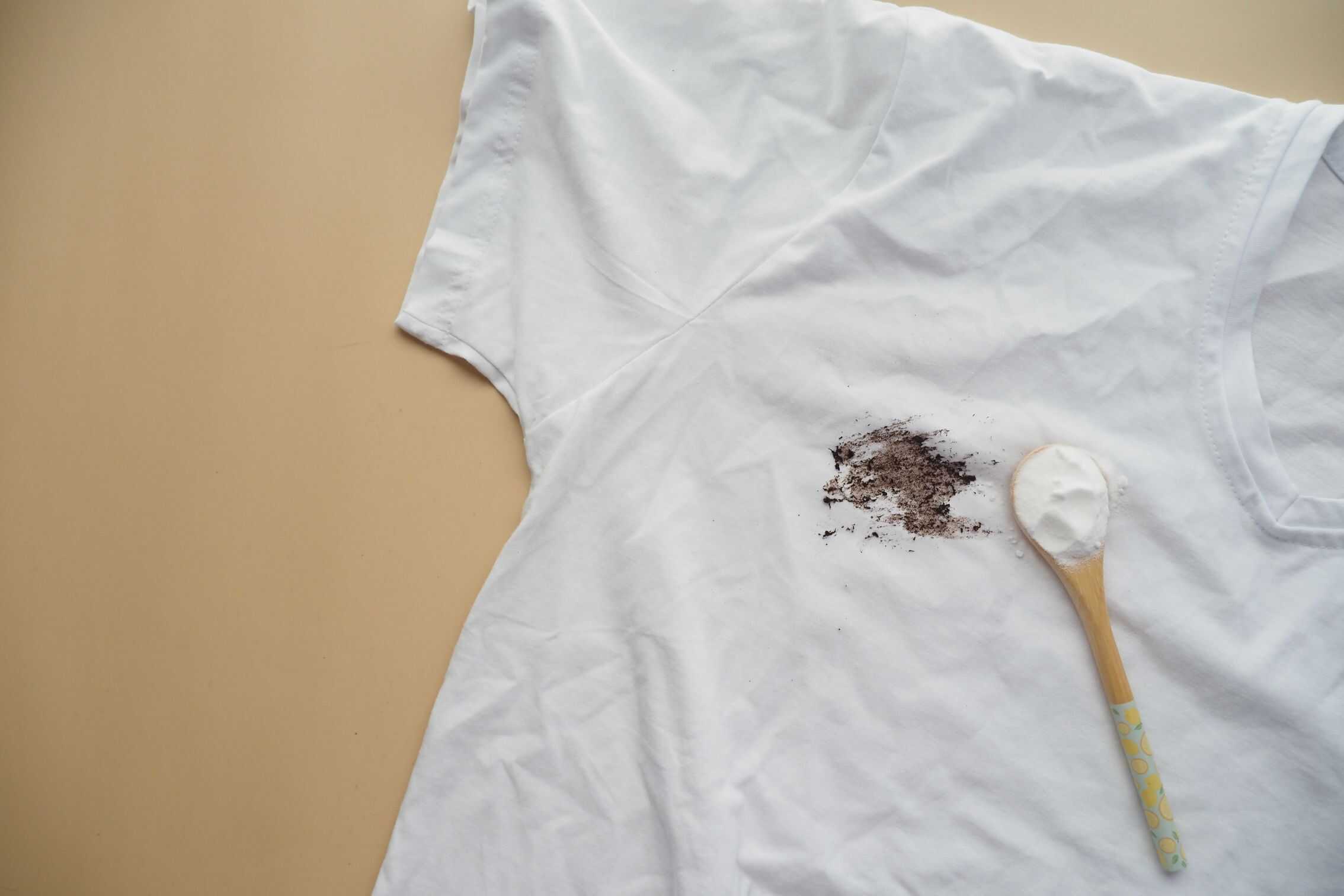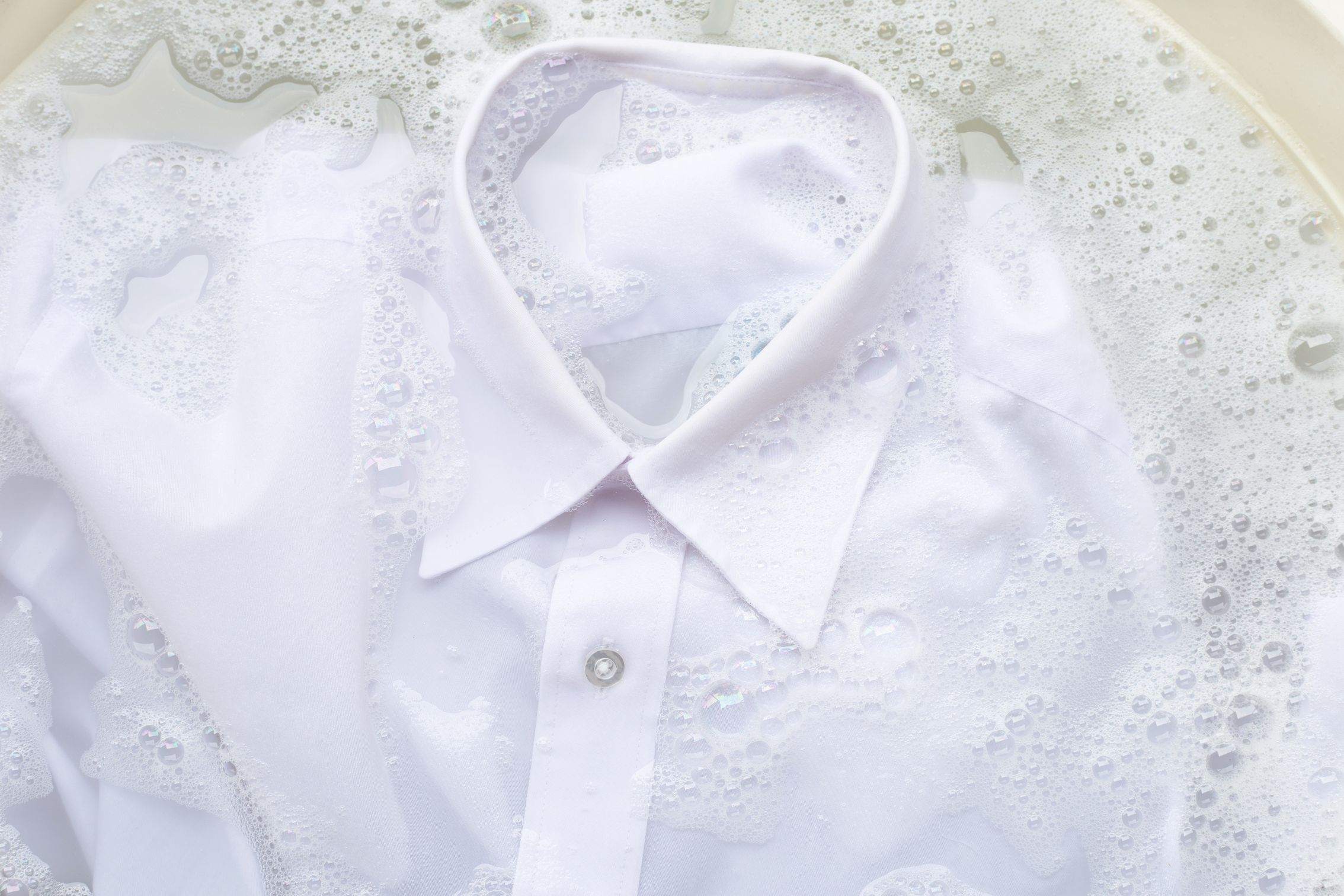Is Gumption low tox and environmentally friendly?
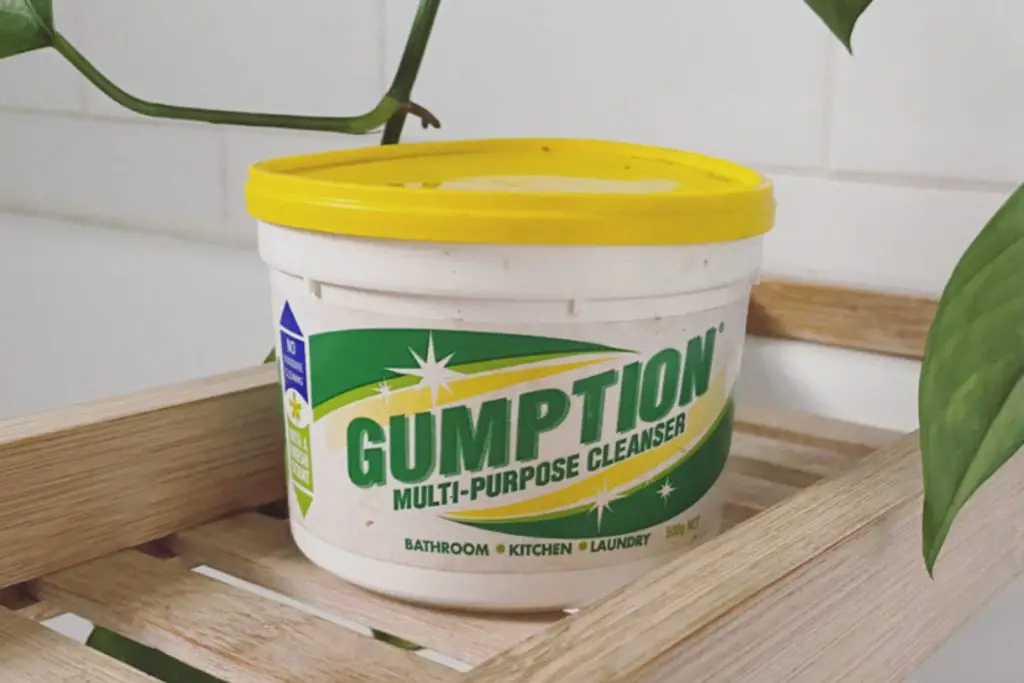
This post was last updated in 2023
Hello there my eco-conscious warriors 😊
There was once a product I swore by – I was assured it was low tox and good for the environment. And that’s no longer the case.
I’m referring to Gumption – an Aussie favourite, used as an abrasive cleaner in many households.
If you are wondering if Gumption is low tox or environmentally friendly, I can tell you: While Gumption claimed to be safe and non-toxic, based on recent reports it is clear that the core ingredients are considered hazardous to humans. As for its effect on the environment, past reports note that Gumption is largely biodegradable and presents no harm to the environment. There are no recent reports that shed further light on this aspect.
So in this blog post, I get into why Gumption is no longer a part of my cleaning arsenal. In covering this topic I answer the following questions:
Plus I cover the following in a FAQ section:
Let’s get into it 🚀
What is Gumption?
Gumption is an Australian-made product that has been around for over 60 years. It’s a cream cleanser that is slightly abrasive. It can be used to get oil, grease or soap scum off most household surfaces.
It’s one of those products you find at the bottom of the supermarket shelves. There’s very little marketing around the product and it seems most people know about it through word of mouth or because their parents have been using it for years. It’s that kind of product.
On their website, they (used to) note:
“Gumption can be used on most modern surfaces such as natural stone benchtops, laminates, baths, basins, tiles, stovetops, ovens and even stainless steel sinks. It will even restore the shine to your pots and pans!”
Source: https://www.gumptioncleanser.com.au/#section-what
I’ve tested these claims and it’s true – it does clean surfaces really well, with very little elbow grease needed.
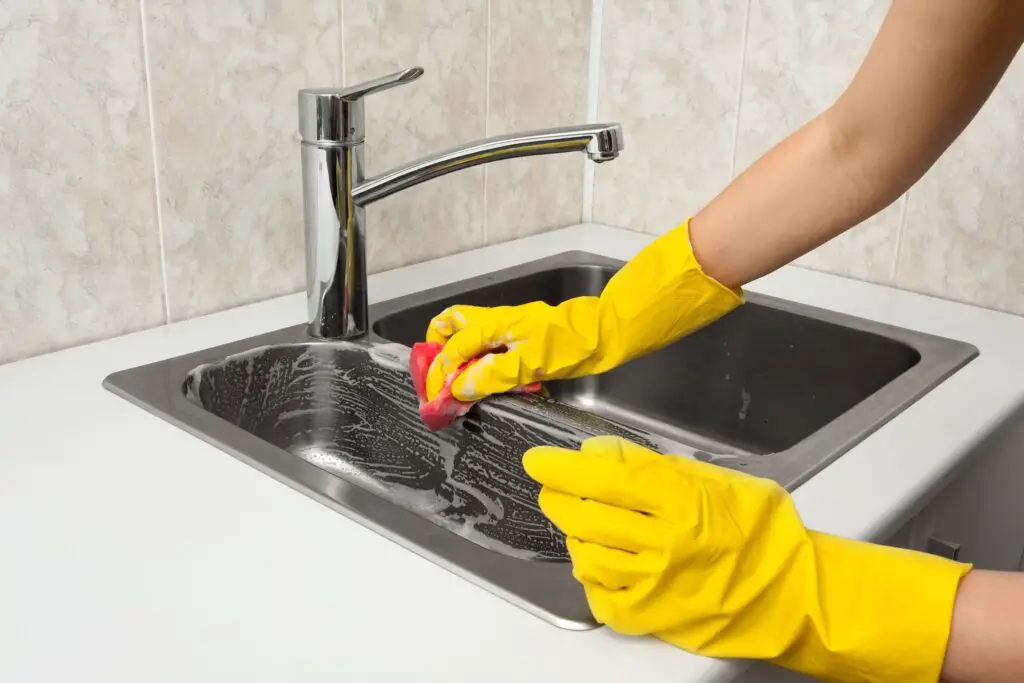
What is the main ingredient in Gumption?
The main ingredient in Gumption is silica, specifically 41% Silica 200 WQ. Gumption also contains 0.42% of borax (sodium borate decahydrate). Other ingredients in the product are unknown proprietary ingredients.
The two ingredients I mentioned come from a recent Safety Data Sheet (SDS) on Gumption, which you can view yourself here.
Sourced via: https://suppleyes.com.au/product/gumption-multi-purpose-cleanser-paste-500g/
An SDS is an industry-standard report that manufacturers are required to prepare for all hazardous products made or imported into Australia. It reports on the safety of a product in terms of short-term and long-term use, as well as environmental impact and any potential hazards from use.
An SDS can be prepared for non-hazardous materials as well. This is usually done if the product is marketed for commercial use.
This is the case for Gumption – this is a product available for commercial use and websites that sell products for commercial use will supply an SDS on their sales page.
It’s usually a good source for information on product ingredients – although as you can tell, it will only list materials deemed hazardous according to Australian standards. Manufacturers do not need to disclose all ingredients and let out their trade secrets.
When it comes to Gumption, the product packaging reveals very little. This is what you will find listed on the packaging:

Yep, not much. Gumption in the past has been very tight-lipped about the exact ingredients in their product. The SDS mentioned above, which only came out recently, has changed this. We know a lot more now.
Is gumption non-toxic?
While Gumption claimed to be safe and non-toxic, based on a recent Safety Data Sheet it is clear that the core ingredients are hazardous. The silica and borax used in the product are considered carcinogenic and are noted as ingredients that can negatively affect your reproductive health.
Section 11 of the most recent SDS mentions this about Gumption:
Contains a known or suspected carcinogen. Classification based on data available for ingredients. May cause cancer. This product contains crystalline silica (quartz) in a non-respirable form. Inhalation of crystalline silica is unlikely to occur from exposure to this product.
Source: Section 11 https://suppleyes-woo-images.storage.googleapis.com/wp-content/uploads/2023/04/19130751/Gumption-SDS-1.pdf
It is the silica that is of most concern in this product – this form of silica is noted as carcinogenic by Australian standards. Furthermore it is noted as a group 1 cariogenic according to the International Agency for Research on Cancer (IARC). Group 1 signifies that it is a known carcinogenic to humans.
This all sounds terrible. However, it should be noted that silica is particularly harmful if it is airborne and in this respect, the silica in Gumption is not as harmful as it could be. As noted above Inhalation of crystalline silica is unlikely to occur from exposure to this product.
The second ingredient of concern is sodium borate decahydrate (borax). This is classified by the IARC as a group 2A carcinogenic. This means it is probably carcinogenic to humans. This ingredient is not considered hazardous according to Australian standards.
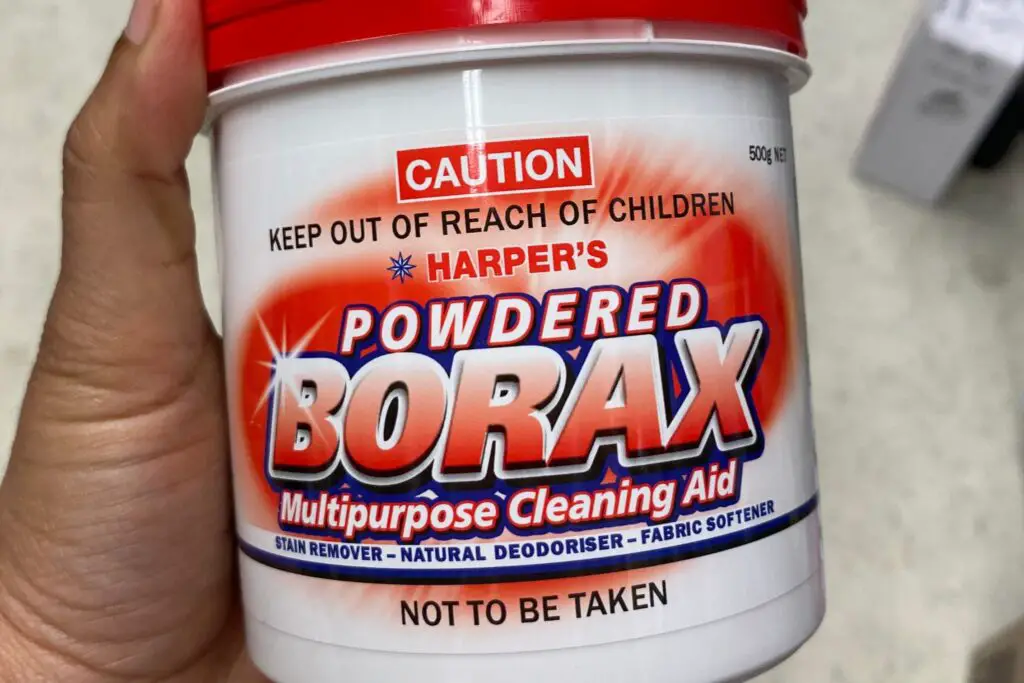
Also noted on the SDS is this:
Contains a known or suspected reproductive toxin. Classification based on data available for ingredients. May damage fertility or the unborn child.
Source: Section 11 https://suppleyes-woo-images.storage.googleapis.com/wp-content/uploads/2023/04/19130751/Gumption-SDS-1.pdf
As noted in the previous section, the packaging on Gumption noted that it contained Isopropanol. When I look up this ingredient, this is what I find:
Isopropanol is also known as isopropyl alcohol and/or propan-2-ol. It is a very flammable, colourless liquid that smells a lot like alcohol. It can be found in tons of cleaning, cosmetic and pharmaceutical products that we use every day, generally in small amounts. (Think cleaners, rubbing alcohol, de-ciers, anti-freeze, disinfectants, etc)
Source: https://momadviceline.com/using-gumption-while-pregnant/
This all sounds very alarming, particulary when looking at the information from the SDS but don’t be too alarmed – these safety data sheets report on the worst, extreme side of things. If I compare these statements to SDS for other household cleaners, it’s not a bad report.
For example, when it comes to recommended usage of Gumption, the SDS does not specify any special precautions, beyond what you would normally expect:
Eye/face protection – No special protective equipment is required.
Skin and body protection – Wear suitable protective clothing.
Hand protection – Wear suitable gloves.
Respiratory protection – No protective equipment is needed under normal use conditions. If exposure limits are exceeded or irritation is experienced, ventilation and evacuation may be required.
Source: Section 8 https://suppleyes-woo-images.storage.googleapis.com/wp-content/uploads/2023/04/19130751/Gumption-SDS-1.pdf
Compare this to the recommended use of Duck Toilet Cleaner, according to its SDS:
Ventilation: This product should only be used in a well-ventilated area. If natural ventilation is inadequate, the use of a fan is suggested.
Eye Protection: Protective glasses or goggles should be worn when this product is being used. Failure to protect your eyes may cause them harm. Emergency eye wash facilities are also recommended in an area close to where this product is being used.
Skin Protection: Prevent skin contact by wearing impervious gloves, clothes and, preferably, aprons. Make sure that all skin areas are covered. See below for suitable material types.
Source: Section 8 https://www.kilford.com.au/assets/DuckBathroomCleaner.pdf
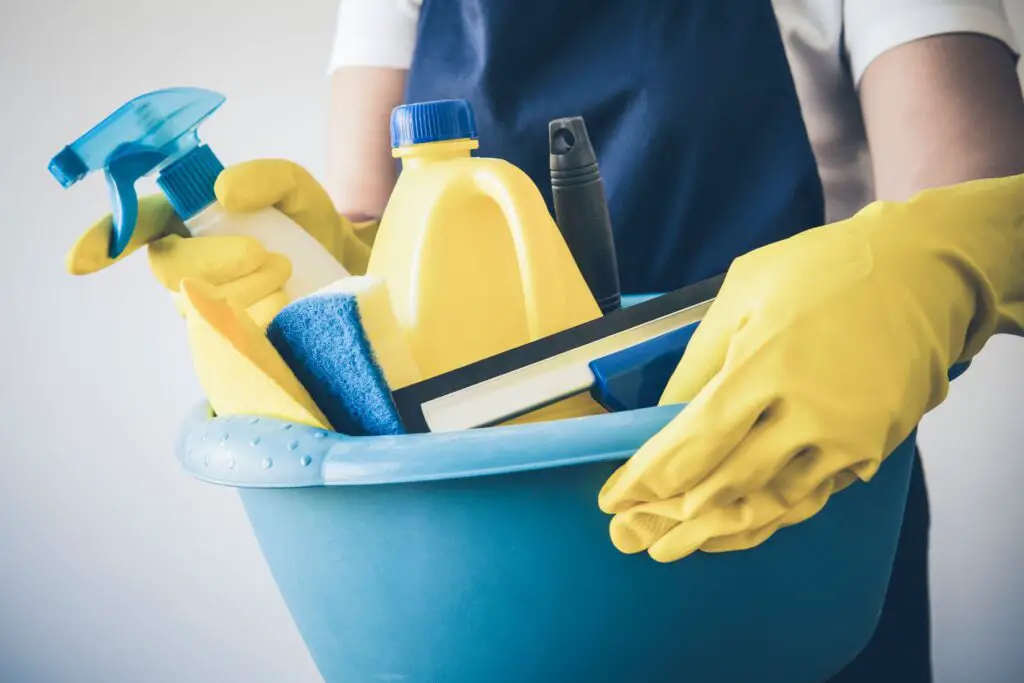
And also keep in mind the SDS are prepared with commercial use in mind, which is why I say don’t be too alarmed!
Still, when it comes to Gumption, the product contains known carcinogens and may affect reproductive health. It may require long-term repeated misuse of the product for these risks to be realised – I don’t know. But who wants to take the chance?
So I no longer use Gumption.
And I have to say, I was very disappointed to find this was the case because when I first looked into this back in 2021 it was a completely different story.
This was the SDS I accessed then: https://www.completecleaning.com.au/content/MSDS/Others/Gumption%20Multi%20Purpose%20Cleanser_Nov13.pdf
No ingredients were listed. And no hazardous substances were noted.
This sheet was prepared by independent consultants, Kilford & Kilford Pty Ltd, who work with the chemical industry to prepare SDS. Looking into the information on their website, the way it works is that the manufacturer provides them with the product and its ingredients so they can gather the data they need to produce the report. They then sign a confidentiality agreement, preventing them from disclosing details about the ingredients to the public.
So back in 2021, I was not surprised that the SDS did not disclose the actual ingredients used in the product – this is normal practice. They only need to disclose ingredients if the chemicals used are considered hazardous.
Since then Australian standards have been revised, with silica in particular being classed as a hazardous substances. This explains the suddent change, I think.
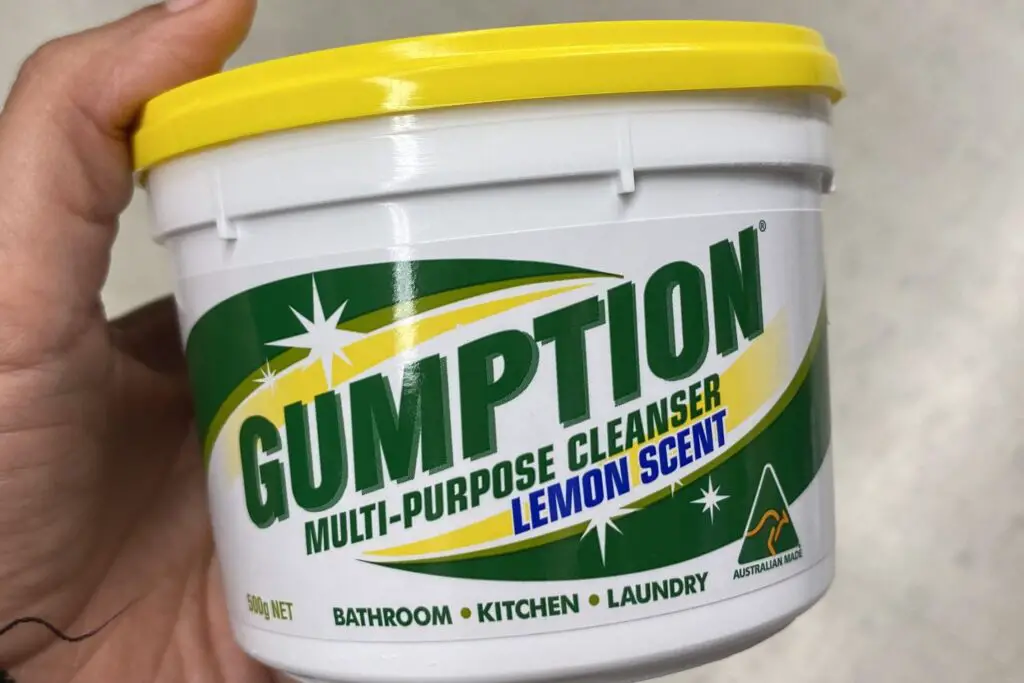
Now funny enough Gumption’s website has completely shut down. Now it is just one landing page that says nothing about the product: https://gumptioncleanser.com.au/
It wasn’t a website that had much to begin with but once upon a time it did note Gumption “contains no bleaches or harsh chemicals, meaning it’s safe as well as versatile..”
All in all, it’s a lesson for me – if nothing is disclosed about the ingredients in a product like it was for Gumption – BE WARY!
Is gumption environmentally friendly?
Recent data and reports on Gumption do not conclusively state that Gumption is good for the environment. However past reports have noted that Gumption is largely biodegradable and it presents no harm to the environment.
The 2013 SDS states this:
Most ingredients in this product are biodegradable. They will not accumulate in the soil or water or cause long-term problems. However, there are mineral ingredients that, while not biodegradable, present no harm to the environment.
Source: Section 12 https://www.suppleyes.com.au/img-data/2017/01/Gumption-Multi-Purpose-Cleanser-1.pdf
While the 2022 SDS states there is “no information available” regarding the toxicity to the environment (see Section 12 of the SDS).
Canstar rates Gumption high up there and gives it a 4-star environmental rating. Couldn’t find much information on how they assess the environmental rating so I don’t put too much stock in that.
I have noticed for other cleaners the SDS often states “harmful to aquatic life”. Neither SDSs on Gumption notes this, which is something.
But here’s another sticking point – if we don’t know what the ingredients are, how do we know how these ingredients were sourced? Sure its use has no negative impacts on the environment during use, but what about the manufacturing process??
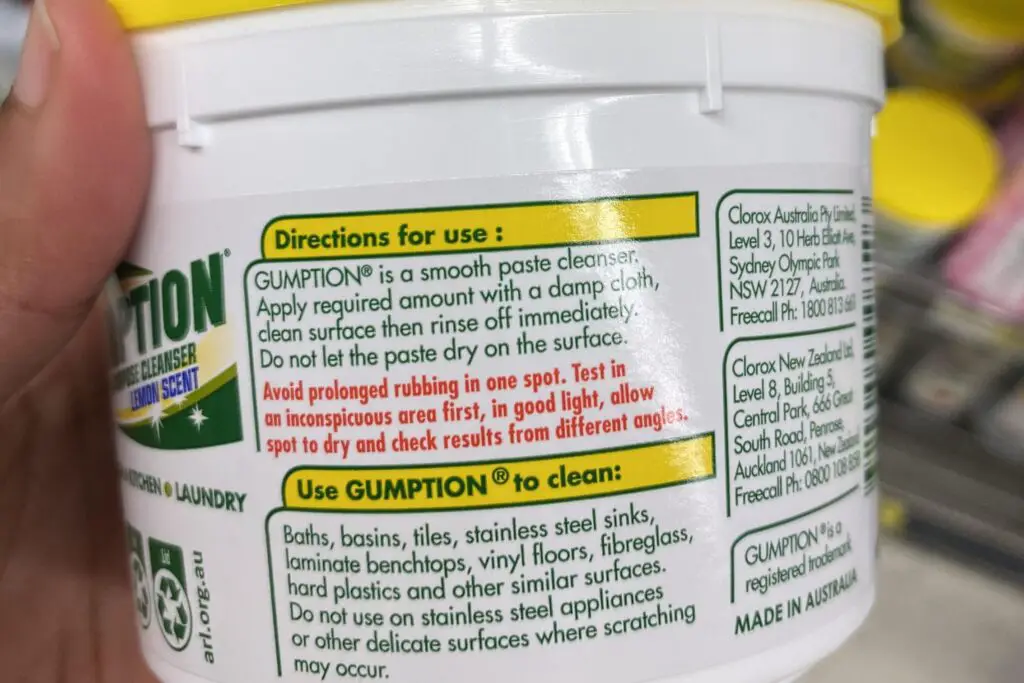
It’s something I can’t answer.
Where do I stand on Gumption?
As mentioned, I no longer use it.
Before the 2022 report was issued, I used it sparingly. My cleaning arsenal is mostly low-tox, largely “natural” products like vinegar and bicarb. Gumption was my only commercially made product.
And while I had my suspicions, I held onto it. It was a highly effective product and you need so very little of it for it to do its job. I had the same tub of gumption for 10 years – I kid you not.
I used it to clean my stainless steel laundry tub, stovetop and oven glass window. That was the extent of my use. Now, nothing.
Do I think you should ditch Gumption? Not for me to say.
The concerns raised about the key ingredients are worrying but I don’t think it means people are at immediate risk of harm if they have used Gumption. I mean I used it for 10 years and my family and I seem okay. And it’s a product that has been around for more than 60 years, so it can’t be all that bad.
But since the product has run out I have not purchased it again. I have made do with bicarb and vinegar.
How do you make homemade Gumption?
Making your homemade version of Gumption is super easy. It’s a simple matter of mixing some bicarb soda with equal parts water and liquid soap. Add just enough liquid to the bicarb to turn it into a thick paste. Then use a damp cloth to spread it on the surface you want to clean and scrub.
Simple.
Any liquid soap/ dishwashing liquid will do.
I use castile soap and extra water (since castile soap is so concentrated). And I am careful only to use a little bit of liquid.
It’s the abrasive power of bicarb that does all the cleaning work.
The only area of the home that I feel like I need this is the laundry sink. And I don’t even bother to make a paste – all I do is sprinkle some bicarb across the sink, spray my multi-purpose spray onto the bicarb (this is a mixture of Castile soap and water) and then get to scrubbing.
It doesn’t take much elbow grease and after no time at all it cleans up really well.

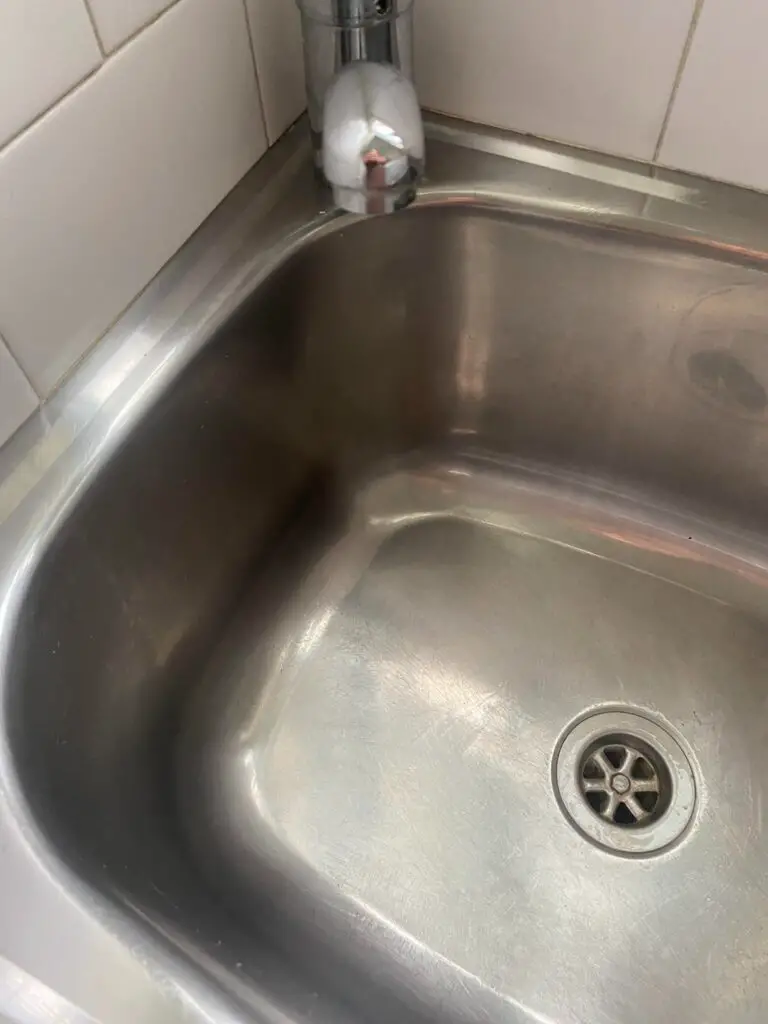
I do the same thing for the oven window now that I think about it. I don’t clean it that often but when I do, it’s bicarb and the multi-purpose spray and a bit of elbow grease on that one.
So are you as disappointed as I am about Gumption?
At least there is an alternative with bicarb. And I assure you, from someone who hates hard work and cleaning, bicarb does the job.
For some other cleaning tips check out the blog posts I have on castile soap, vinegar, soap nuts for some surprising facts and interesting uses.
I’ve tried and tested so many options over many, many years and have hit upon things that work. And it’s important to consider more sustainable options as it is through these conscious choices, we can collectively work towards a more sustainable future 🌎
xxx Tahsin
FAQs
Is Gumption cleaner natural?
Gumption prides itself on being a versatile and effective cleaner, but it’s not entirely natural in the sense of being free from synthetic ingredients. Its main ingredient is Silica 200 WQ.
More information on this was covered above.
Is Gumption hazardous?
Gumption does contain ingredients that are classified as hazardous. Silicia and borax are two ingredients used to make Gumption and the International Agency for Research on Cancer (IARC) has classified these as hazardous substances. It is unclear how much use and exposure is needed to realise the risks associated with these ingredients.
Usage information can be found above however this is centered around commercial use.
For personal use, it’s advisable to follow the usage instructions on the label and take necessary precautions, such as avoiding contact with eyes and keeping it out of reach of children and pets.
Does Gumption have bleach in it?
Gumption does not contain bleach. Its cleaning power comes from a blend of abrasives (mainly silica), making it a non-bleach alternative for tackling tough stains.
Is Gumption antibacterial?
Gumption primarily focuses on powerful cleaning action rather than acting as an antibacterial agent. While it doesn’t claim to be antibacterial, its effective cleaning properties help remove dirt, grime, and stains.

